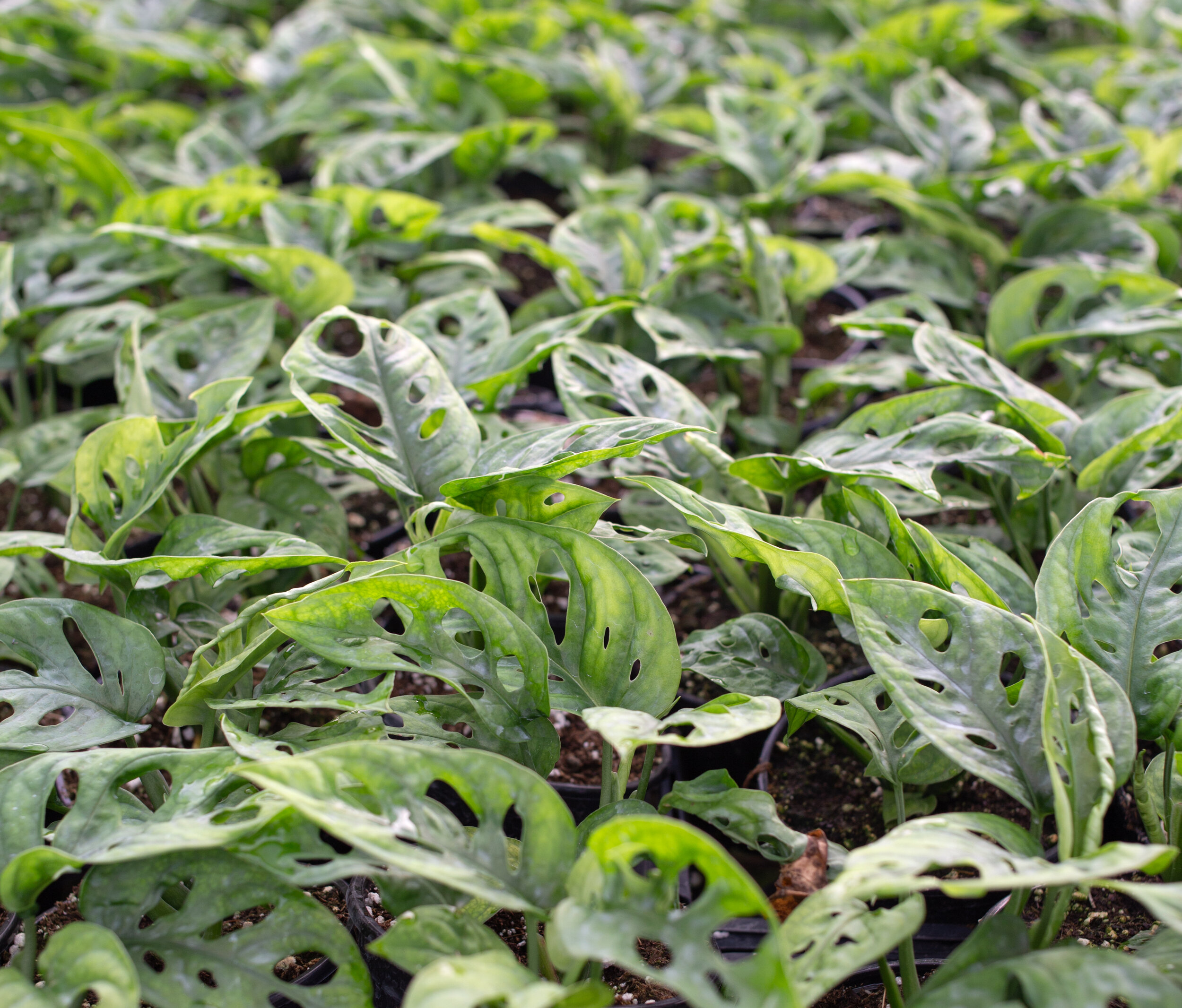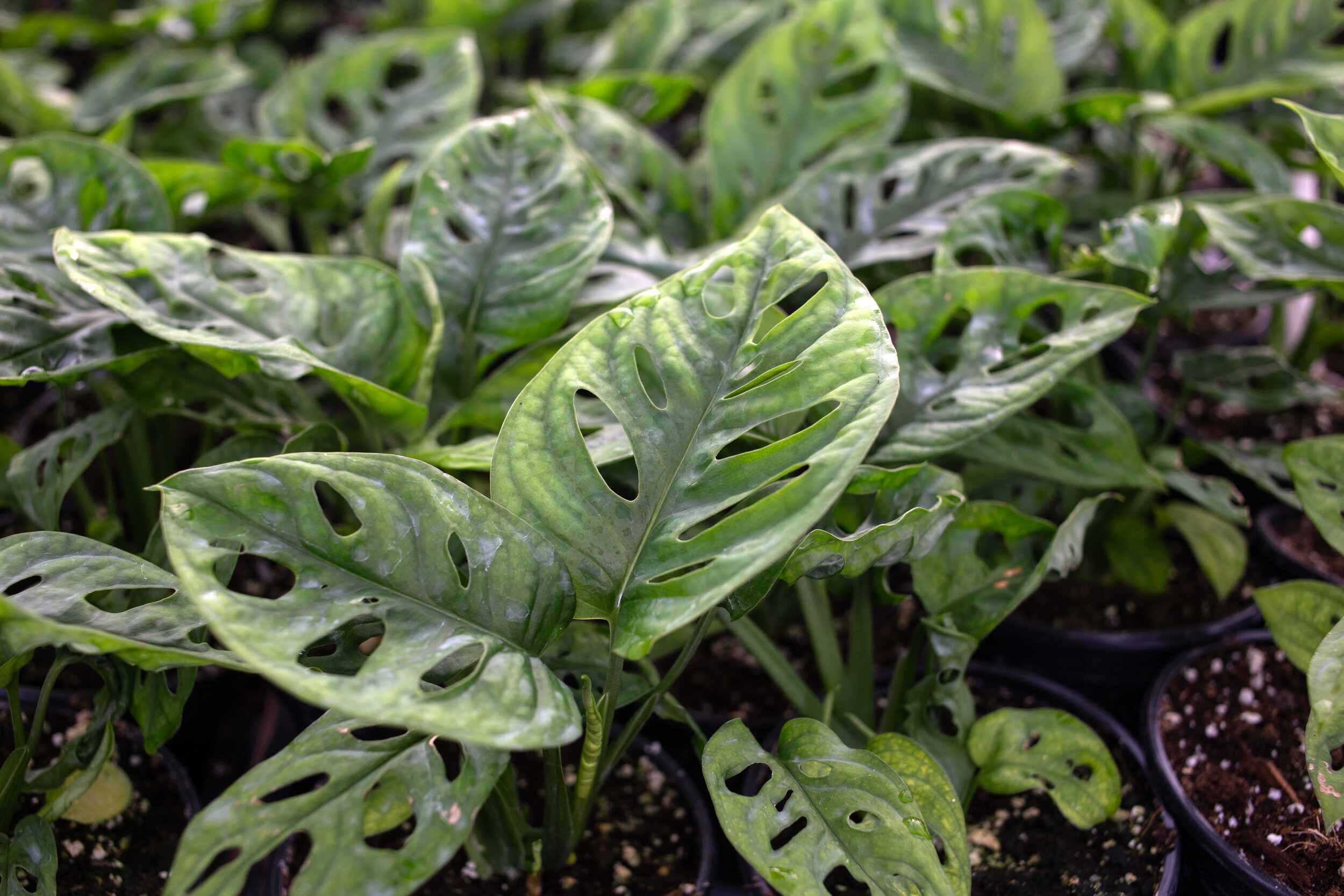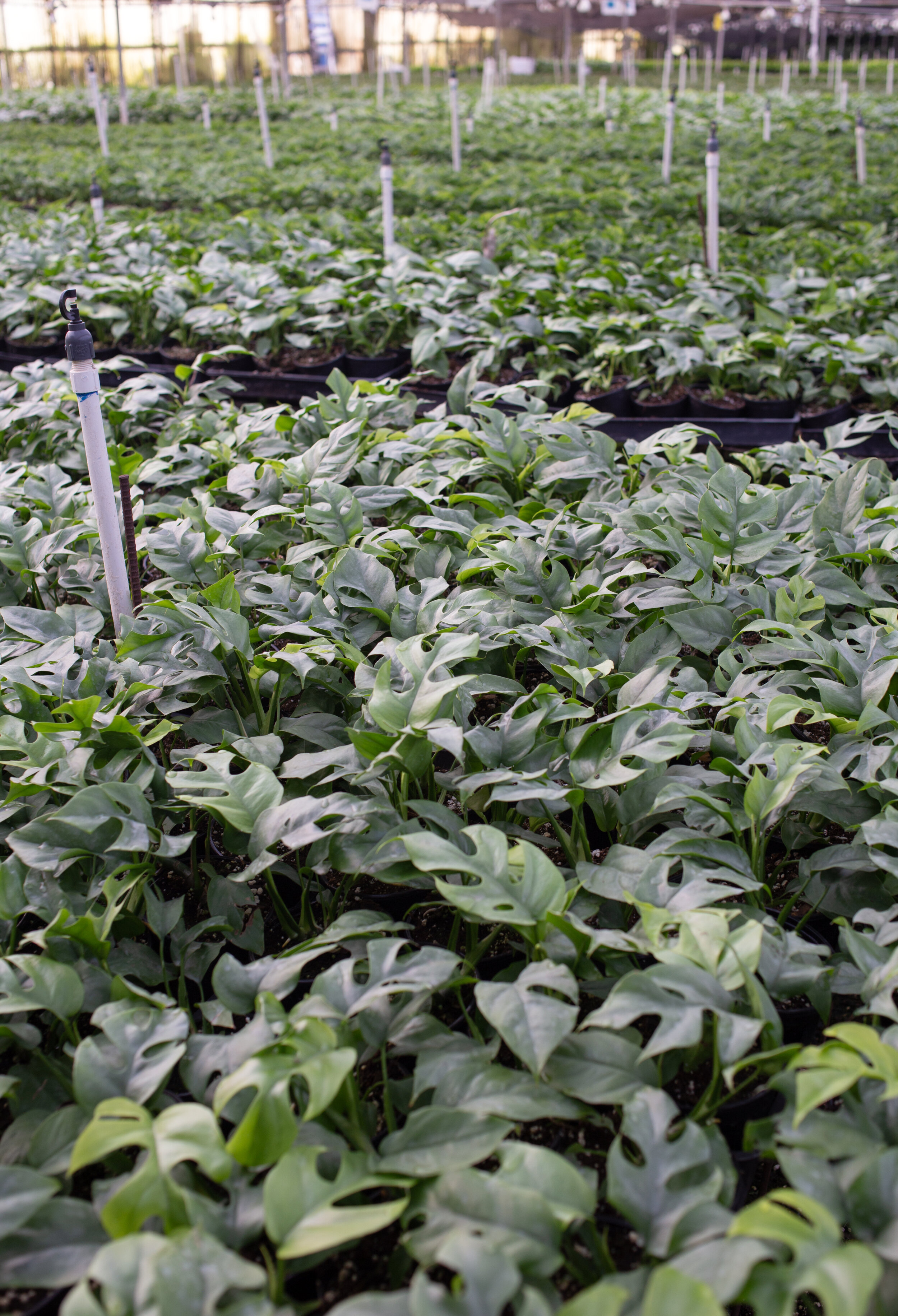Monstera
The Plant of
Value & Respect
Two different species of Monstera are cultivated as houseplants. Monstera adansonii is distinguished by having longer, tapering leaves, as well as having completely enclosed leaf holes. Monstera deliciosa have odd-looking, perforated leaves that are often punched through with holes. This climbing evergreen is a popular easy-to-grow houseplant and a favorite of many interior designers for both residential and commercial spaces.
Monstera Care Line Classification
Care Information
Light
Place in bright, indirect light.
Temperature
Prefers temperatures 60-70°F. Avoid drafts.
Water
Keep soil evenly moist at all times. Mist 1-2 times a week to increase humidity.

The Monstera: Deep Dive
Season
Year round indoors
Care
Monstera thrive in bright to medium indirect light. Not suited for intense, direct sun but can be acclimated to withstand it. Water every 1-2 weeks, allowing soil to dry out between waterings. Expect to water more often in brighter light and less often in lower light. It is best to take off the wrap or non-draining container and place in a sink when watering to allow it to drain from the bottom of the pot. Once the pot has drained, replace it to its original spot.
Home to Garden
The best time to move your houseplants outside is during the summer growing season when conditions are just right. To avoid your plants from frying in the summer sun, place them in full shade when you first move them outdoors. Avoid bright sunlight to start. Plants that have adjusted to indoor light can burn if placed in outdoor direct sunlight (even if they were in bright direct light inside). With the increased light and heat, they will most likely dry out quicker than they did inside. Check the soil daily, and water thoroughly when dry.
Flower Meaning
Monstera is said to represent honor, respect and longevity. It is a great plant for someone who values their background and family history.
Fun Facts
Also known as the Swiss cheese plant, Monstera is part of Araceae, the Aroid Family. They are one of the few aroids that produces edible fruit, particularly, Monstera deliciosa, though they rarely flower or produce edible fruit indoors. Its corncob-shaped fruit is said to taste like a combination of pineapple, banana, and mango. Monsteras, like many aroids, were formally made known to the botanical world during the early 20th century, although they had been known much longer by the indigenous peoples of Central America. In the wilds of the jungle, Monstera can grow to be enormous: dozens of feet tall with leaves that spread to nearly two feet wide.










